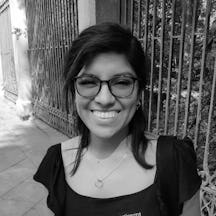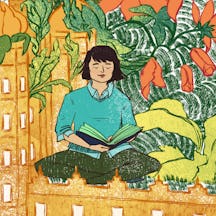Researcher and biologist Nataly Allasi Canales imagines what it would be like to grow up with the Matsigenka, living in the forest in the Amazon Basin and using the plants around her as food and medicine. To broaden our understanding of that environment, she interviews two Indigenous healers about their relationship with the forest.
How Indigenous insight inspires sustainable science
Words by Nataly Allasi Canalesartwork by Cat O’Neilaverage reading time 6 minutes
- Serial
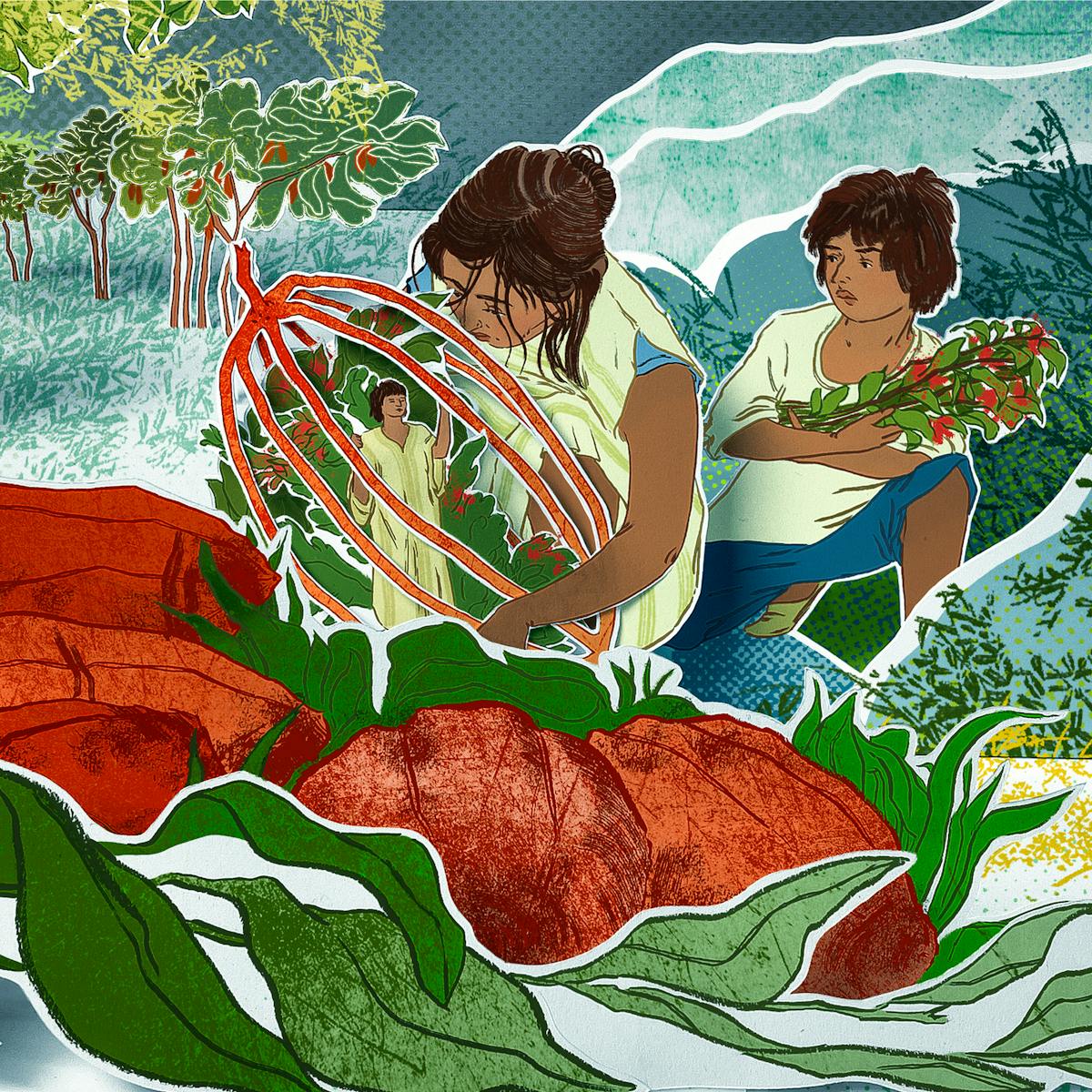
If I was a woman from the Matsigenka people, I would live in Manu (in the Madre de Dios region in Peru), in my mother’s community. All of us would be in isolation from the cities, a lesson we learned from the rubber boom that enslaved and massacred our ancestors. I would be one of the 6,629 people that speaks Matsigenka as their first language.
As a child, I would be playing with animals, counting the number of squirrel monkeys that jump from branch to branch, climbing trees and falling because I touched a venomous caterpillar (from the genus Lonomia), collecting leaves of different shapes and comparing them with my brother’s collections.
As a teenager, I would dedicate my time to learning from my grandmother about gathering plants, like cassava, plantain and maize. I would use them to prepare food for everyday consumption and drinks, like ovuiroki (or masato, based on fermented cassava), for ceremonies. As a woman and mother, I would also utilise medicinal plants to treat my kids for any physical, psychological or spiritual illnesses and to facilitate their life’s transitions.
As a community leader, I would seek answers in ayahuasca and toé during troubling times. As an environmentalist, I would stand by my people, fight for our rivers, guard our ecosystems and be targeted by (illegal) mining businessmen. And for it, my family and I could be killed.
The traditional knowledge and cultural expressions of Indigenous peoples manifest their interactions with the environment. These include the skills they developed to solve particular problems and the ways they perceive and live life (cosmovisión), always connected to their land. This knowledge can be used in ecology, rituals, songs, stories, agriculture, hunting and, of course, medicine.
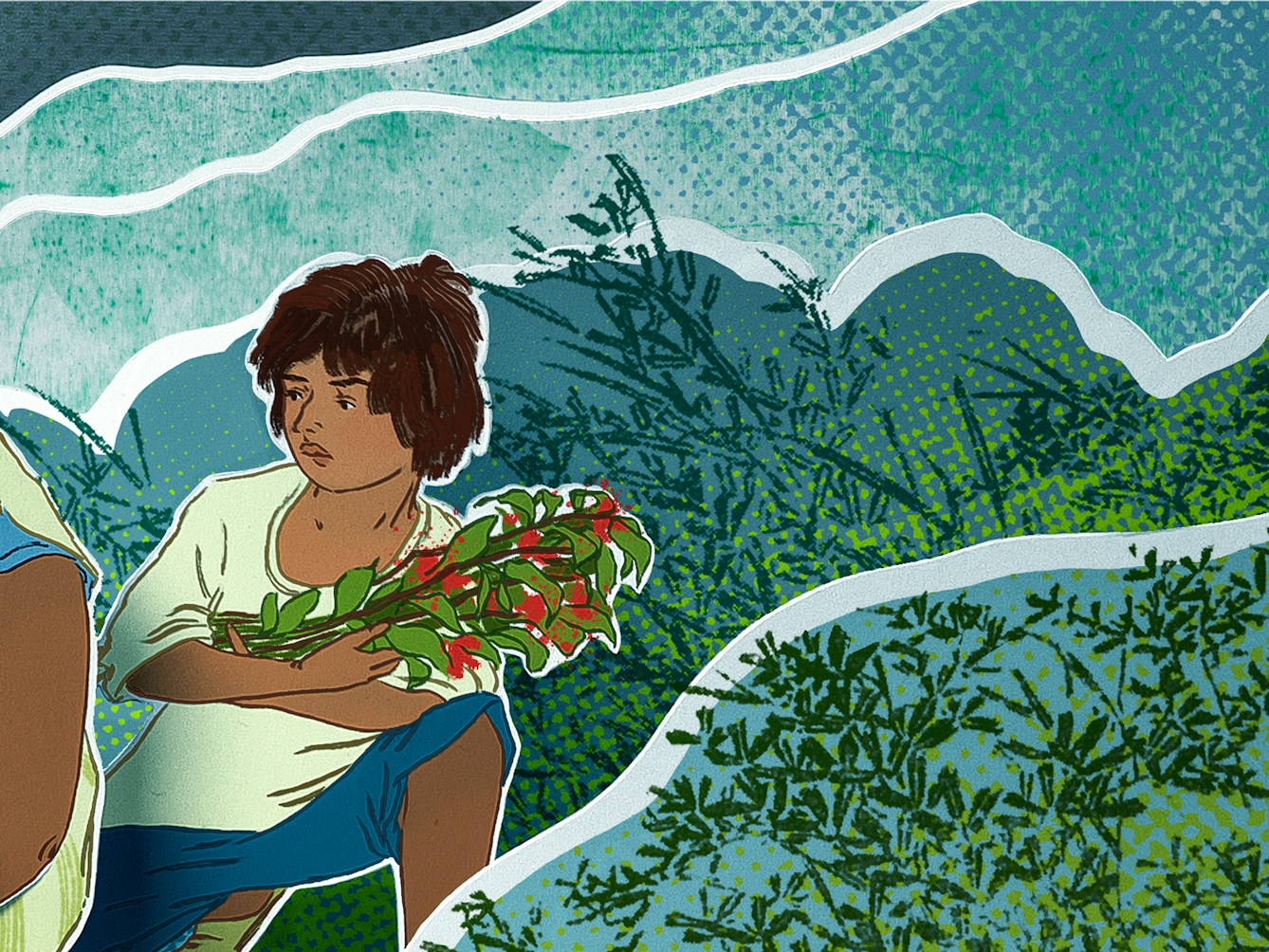
“As a teenager, I would dedicate my time to learning from my grandmother about gathering plants, like cassava, plantain and maize.”
Generations of information
Traditional medicine is the accumulated theoretical understanding, skills and empirical evidence that are transmitted from generation to generation. According to the World Health Organization, up to 80 per cent of the populations of developing countries rely on traditional medicine as their first source of medicine.
According to the World Health Organization, up to 80 per cent of the populations of developing countries rely on traditional medicine as their first source of medicine.
For example, we might not think too much of aspirin, but its natural source (salicylic acid) can be found and extracted from meadowsweet (Spirea ulmaria). In fact, it passed clinical trials and was ‘only’ patented in 1900, but Hippocrates (460–377 BCE) reported the analgesic effects of the derivatives of salicylic acid found in the bark and leaves of this plant.
Aspirin is not the only bark-derived drug; during my PhD, I was extremely lucky and honoured to have worked with the fever tree (from the genus Cinchona), the national Peruvian tree. The alkaloids derived from its bark, including quinine, have been used to treat malaria for hundreds of years. This bark (quina in Quechua) is deeply embedded in the traditional knowledge of Andean peoples and is still used for different ailments.
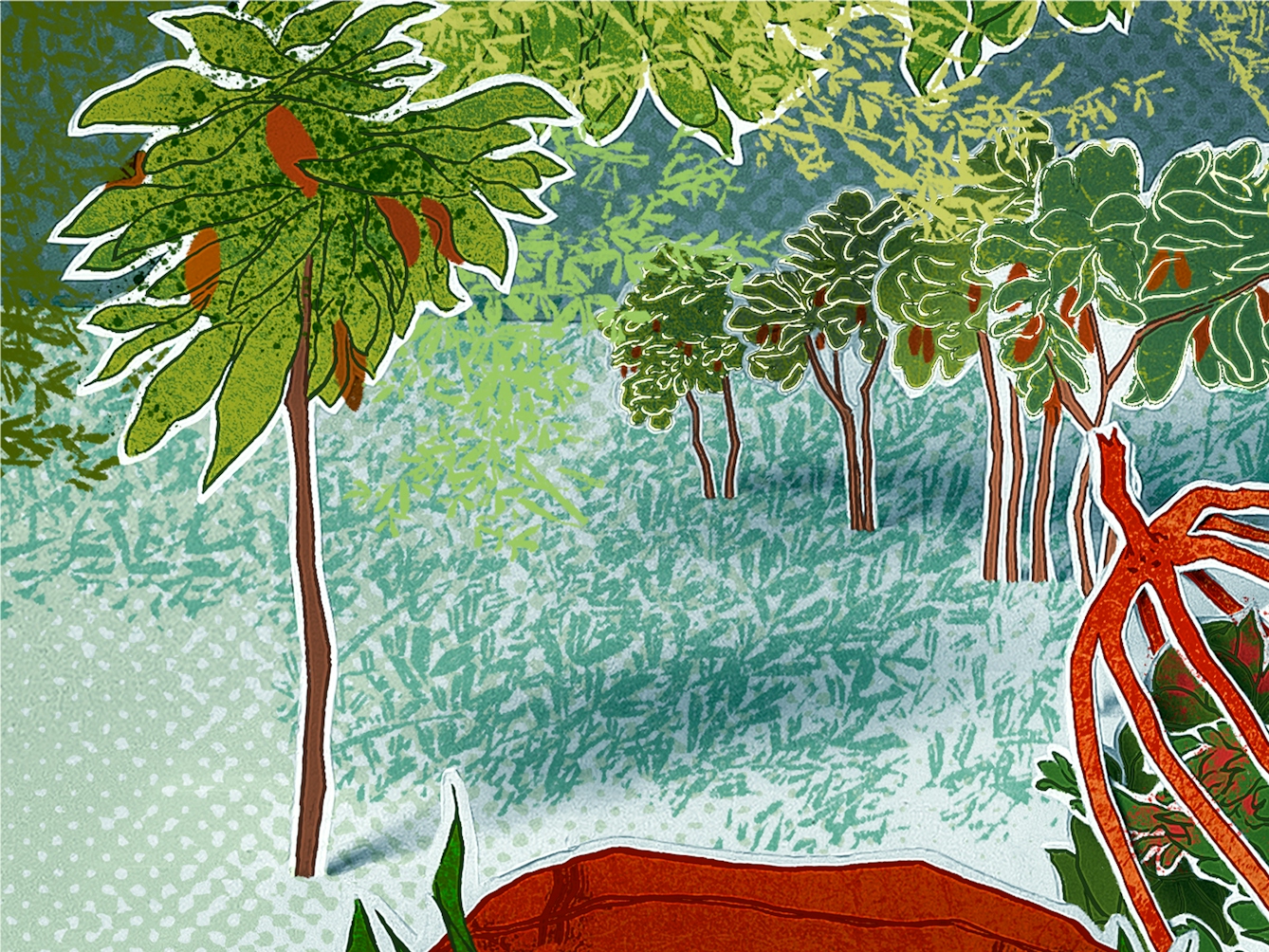
“The fever tree bark (quina in Quechua) is deeply embedded in the traditional knowledge of Andean peoples and is still used for different ailments.”
In my view, it’s so powerful that this kind of expertise is still practised and thriving now, despite hundreds of years of oppression of the native cultures around the world, disdain for their wisdom, and systematic abandonment (at best) by governments.
I wanted to know how Indigenous peoples managed to source treatments for different maladies from the forest, and how this know-how has survived. For this, I was fortunate enough to talk over the phone to a couple of healers and elders in the Peruvian Amazon, which was mediated by my mum and only possible because they know her work ethos.
Zoila, originally from Loreto and from the Murui nation, lives in the Centro Arenal community, by the Amazonas river. She describes herself as a “curious person” rather than a healer. Immediately, I realised how similar healers and researchers are.
Influenced by her family, at a very young age she was growing plants in tins, then when she became a leader, she used ayahuasca as a guide and information source when things were uncertain. I’m curious about how someone like Zoila feels about the forest. “It’s a part of me; without it we wouldn’t have fresh air and humanity couldn’t be protected,” she says. “The forest is sacred.”
I agree, and as the parrot’s sound on her side distracts me for a moment, I realise I miss the Amazon and my country as never before in the eight years I’ve been away.
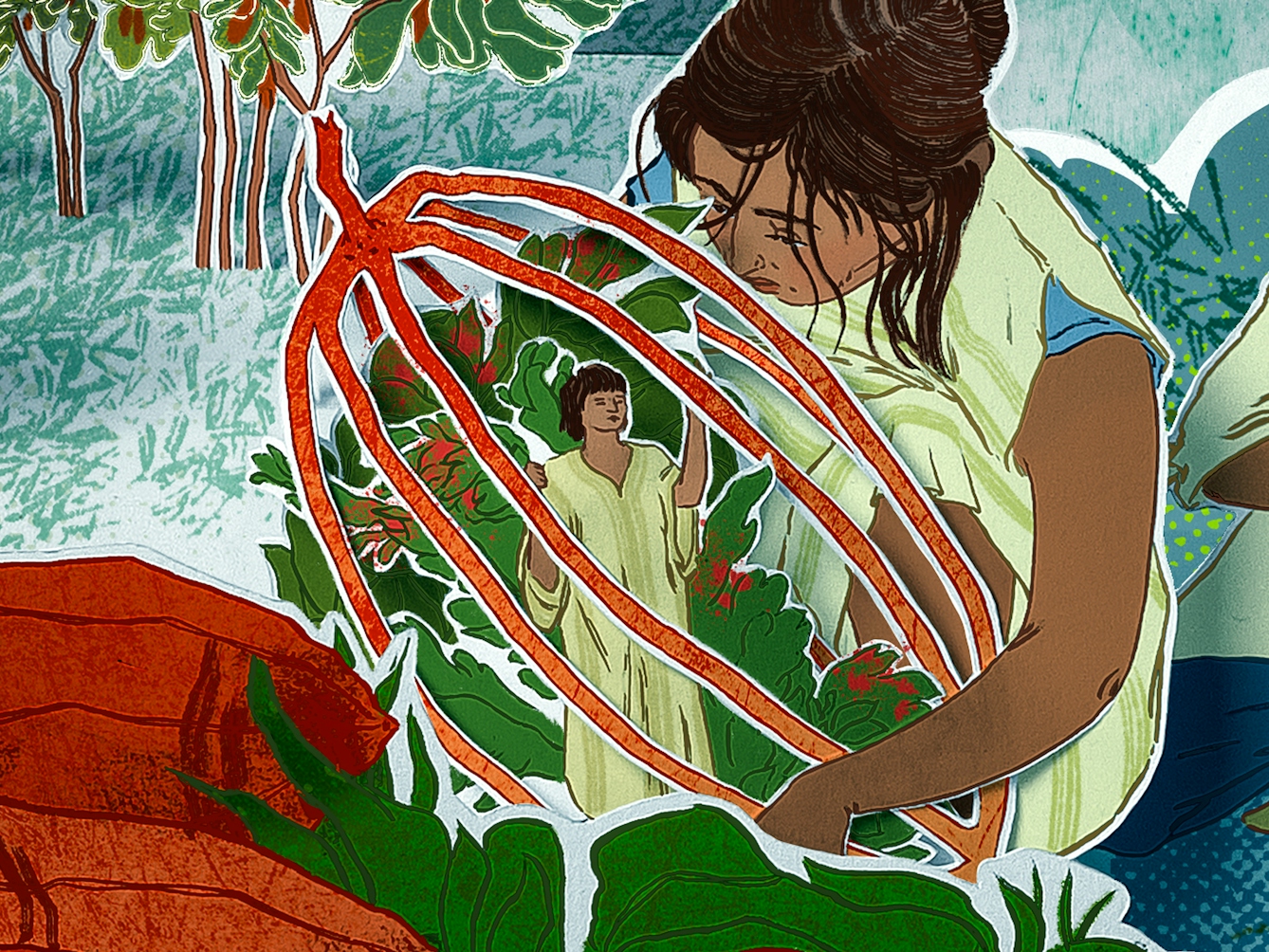
“It’s so powerful that the traditional knowledge of the Andean peoples is still practised, despite hundreds of years of oppression, and systematic abandonment by governments.”
Fighting the forest’s exploiters
I also had the chance to talk to Milton, an experienced healer from the Shipibo-Konibo nation, in the Ucayali region. He led comando matico in his region, an Indigenous initiative to treat Covid-19 in the inner forests. He was also influenced by his mother and grandparents, who used plants as medicines.
He believes plants and rivers have spirits and as such they should be respected. “We mustn't destroy the plants; we have to appreciate and help to preserve our Amazonian pharmacy. Also, we mustn’t give them a bad use or commodify them to benefit others at the forest’s expense.”
Both Zoila and Milton have similar struggles to preserve the forest from oil exploitation and coca plantations for drug consumption, and to protect their knowledge from profit-driven pharmaceutical companies, and their language and culture from the overwhelming and constant influence of foreign cultures.
They both agree that the best way for anyone to connect with the forest is by paying a visit to the nearest forest and get to experience it. And if it’s not possible to visit, we can learn and educate ourselves about the riches, the beauty and the significance of it to preserve future life. Those are the reasons to continue the practice and pass the information to the next generation.
Being aware of different kinds of knowledge and respecting them can make us more empathetic citizens and could avoid socio-ecological disruptions. And as life scientists, integrating all those aspects in our research can drive a better science that is rooted in accumulated wisdom, experience, and history of the peoples with strong bonds with the subjects of our study, stripping it from colonial perspectives and biopiracy disputes.
This leads to a more informed, kind and respectful way of doing science.
About the contributors
Nataly Allasi Canales
Dr Nataly Allasi Canales is a researcher and environmentalist at heart. Originally from the Peruvian Amazon, her aim is to unravel evolutionary histories of important organisms from her hometown, and by doing so she also aims to empower the local communities with science. She is a postdoctoral researcher at the University of Copenhagen.
Cat O’Neil
Cat O’Neil is an award-winning freelance illustrator, specialising in editorial. She studied at the Edinburgh College of Art, graduating in 2011, and has lived in Hong Kong, London, Glasgow, Lyon and Edinburgh. Her clients include the New York Times, Washington Post, WIRED, LA Times, Scientific American, the Financial Times, the Guardian/Observer, Libération and more. Her work explores the use of visual metaphors to convey concept and narrative, and combines the use of traditional and digital mediums. Much of her recent work includes the creation of 3D paper sculptures, which are made in her studio in Edinburgh.
